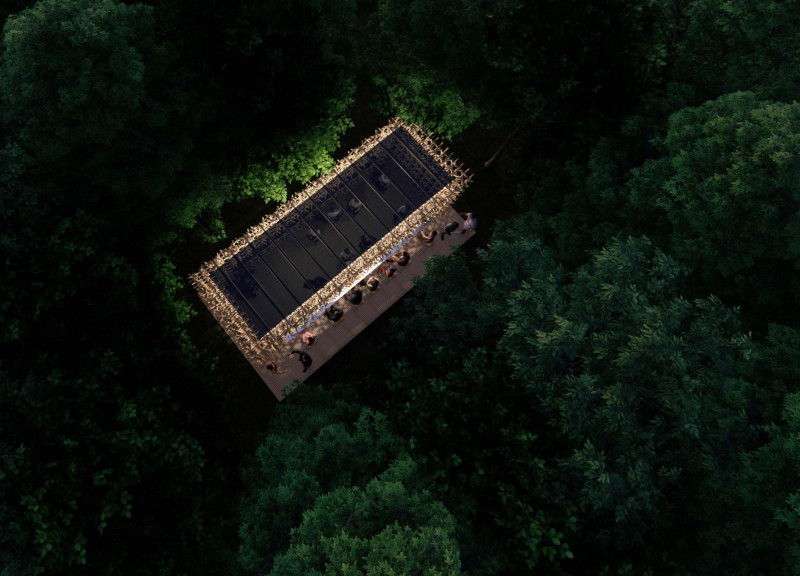5 key facts about this project
The project utilizes traditional Chinese mortise and tenon joinery, set in an engaging festival atmosphere. It combines modular design and community involvement to create flexible spaces for various functions, including food courts, rest areas, and stages. By incorporating this time-honored technique, it emphasizes both craftsmanship and user interaction, allowing festival-goers to actively participate in the building process.
Construction Technique
At the heart of the design lies the mortise and tenon connection method. This approach relies on the fit between concave and convex parts to create a sturdy structure. The design does not use adhesives or metal fasteners, depending solely on wood to maintain stability. The use of this traditional technique highlights its cultural significance while meeting modern needs efficiently.
Modularity and Flexibility
The structure is built around a modular system with identical units that can be arranged in various configurations. This adaptability offers the possibility of creating diverse spaces tailored to different activities. For instance, in the food court, bar counters and partition walls help streamline food preparation and dining experiences. This flexibility not only enhances functionality but also allows the space to evolve for different contexts and events.
Community Engagement
Community participation is a central element of the design. Festival attendees are encouraged to join in the assembly of the structure, guided by simple, clear instructions. This hands-on involvement transforms observers into active participants, fostering a sense of ownership over the environment. As individuals engage in the construction, they build a connection with the space and with each other.
Dynamic Design Elements
The upper part of the structure features a waterproof fabric layer that provides protection during adverse weather conditions. This functional aspect can be installed temporarily, ensuring comfort and usability regardless of the environment. The design allows for disassembly and reuse of components, reinforcing a commitment to sustainability. Participants can take home pieces as memories, creating a tangible link to their experience.
The blend of traditional techniques and contemporary needs shapes a unique narrative in architecture. Each component assembled not only serves a functional purpose but also represents shared experiences, turning a simple structure into a meaningful space for community interaction and collective memory.






















































